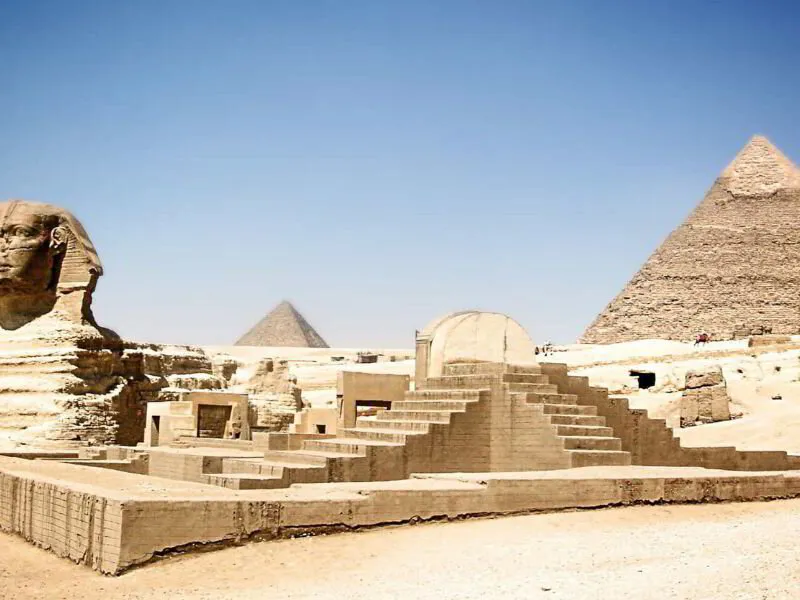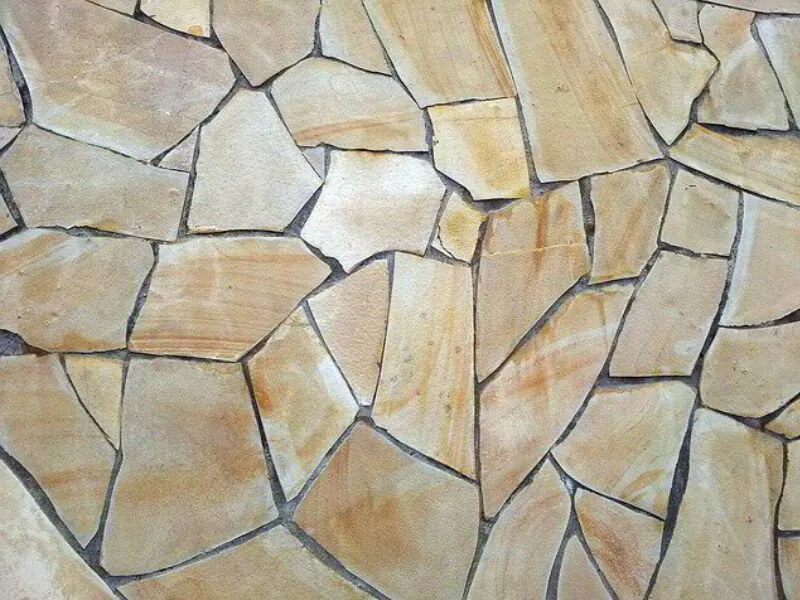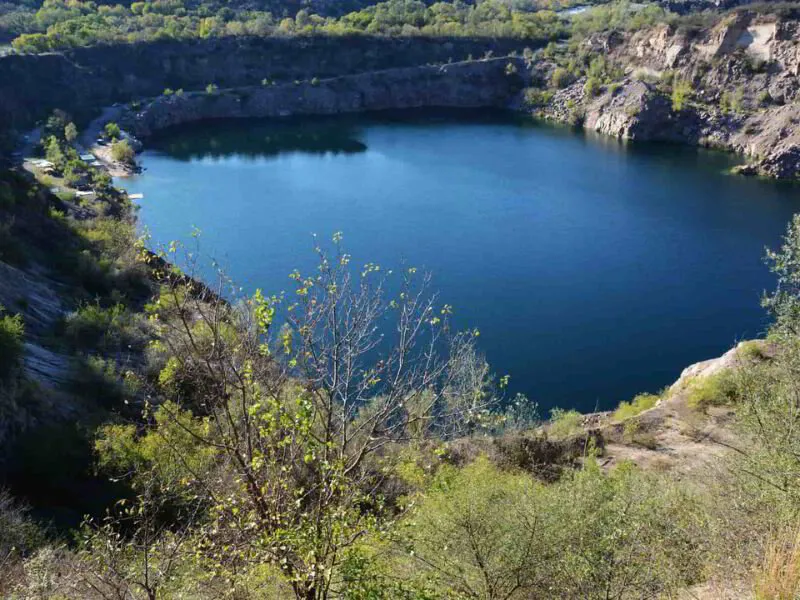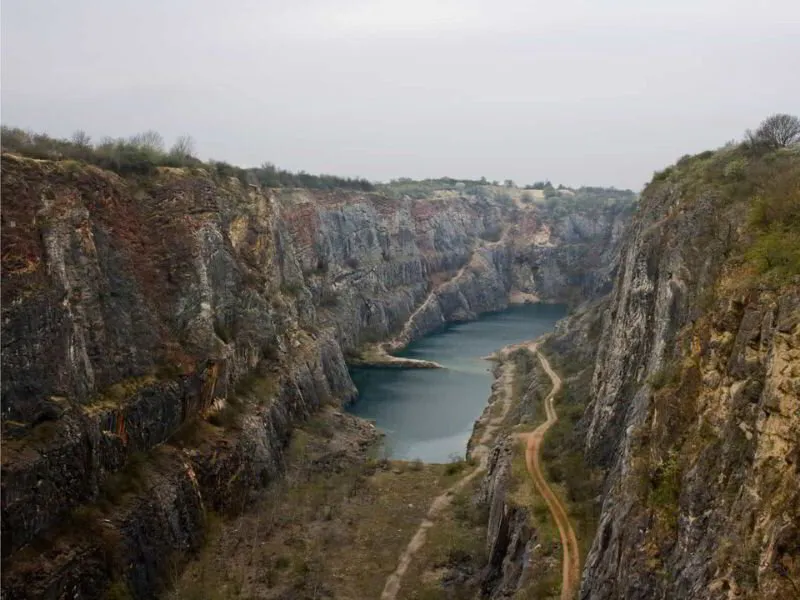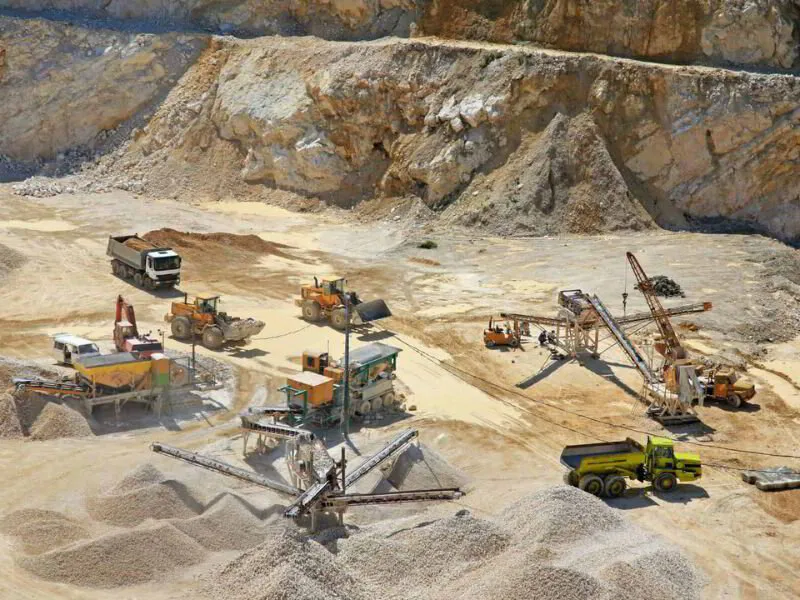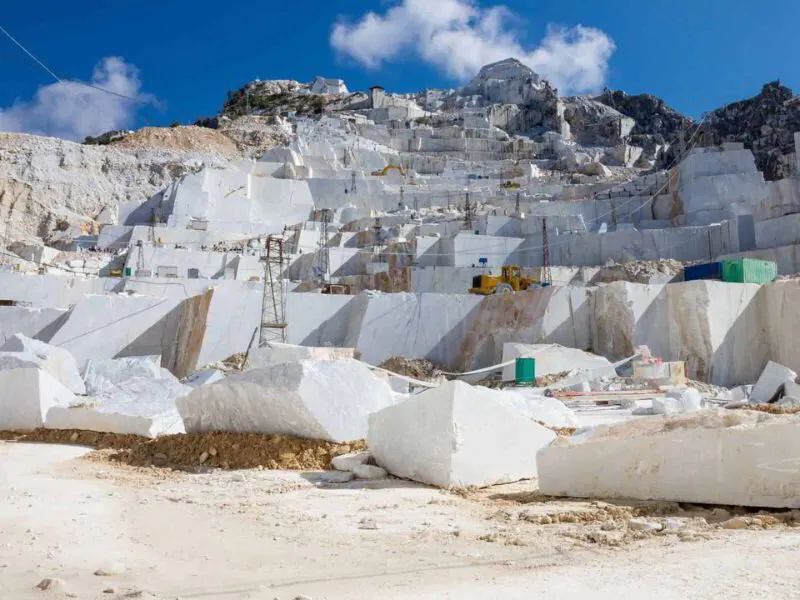Earth is a marvelous source of natural resources, including minerals, sand, and rock extracted through a process called quarrying.
Quarries, where extraction takes place, are a type of mine that differs from underground coal mines, instead using an open pit mine structure.
What is the meaning of quarry mining?
Basically, a quarry is a large, man-made hole where rock and minerals are removed.
When a significant amount of a valuable, useful rock or mineral is found near the earth's surface, a quarry may be built to extract it.
Other related terms for quarry mining are strip mining and open pit mining.
Most commonly, stone quarries are mined for high-quality, durable building materials.
For centuries, ancient civilizations utilized quarries to support the impressive construction of famed world wonders using natural stone like limestone, granite, sandstone, and marble.
Here's a beginner's guide to quarry mining activities, from basic terms and processes to quarrying advancements and environmental impacts.
⛏️ The Origins of Quarrying Methods
The generation of quarries dates back thousands of years, to support the development of growing societies.
Early quarries relied on manual labor using handheld mining tools like picks, chisels, and hammers made of various metals or stone.
Many cultures have historically used stone quarries to build important structures, monuments, and artifacts, often requiring hauling massive pieces of stone great distances after being extracted from a sandstone, limestone, or marble quarry.
Originally, heavy rock was carried long distances with tremendous manpower, employing a combination of slave labor and basic mechanical systems to haul large pieces with pulleys, wood tracks, and rope.
⛏️ What is the Difference between a Mine and a Quarry?
In basic terms, a mine could be a surface open pit or underground hole or tunnel system dug to extract ore from the earth, while a quarry is an open pit on the earth's surface that extracts mostly stone.
⛏️ How is Quarrying Mining Done?
Quarries today use industrial-grade mining equipment for blasting, drilling, and hauling materials.
Diamond-tipped drilling equipment, powerful explosives, and heavy-duty mining trucks all aid in modern stone quarry mining.
Quarry sites are now mapped with impressive accuracy using satellites and drones.
The most common means of modern quarrying are digging, heating, wedging, and blasting.
Blasting involves multiple steps using drilling equipment and explosives to extract hard rock.
The quarrying industry today supports countless businesses and operations in many countries, and the methods of removal to loosen and separate rock and minerals from where they naturally lie are continually updated.
⛏️ What Do You Mine in a Quarry?
There are several purposes for stones most commonly mined in quarries, and different terms are used to describe certain types.
Aggregates and dimension stones are among the most common quarried materials.
What are Aggregate Stones?
In quarrying, aggregates consist of excavated crushed rock, gravel, and sand.
These materials are frequently used in the foundations for roadways and train tracks.
Aggregate is mined to make essential building materials like asphalt and concrete, so facilities like ready mixed concrete plants are often constructed nearby.
What are Dimension Stones?
In quarrying, a dimension stone is a larger, precisely cut excavated piece.
These slabs are polished and finished, then used to make and adorn buildings.
Dimension stones can be used in home construction and interior decoration for tiles, counter tops, roofing shingles, and more, and are often considered a quality luxury item.
Headstones to mark graves are another example of how a dimension stone can be used.
⛏️ Quarries and the Environment
Several environmental factors must be considered when discussing quarries and quarry mining.
Any extraction of rock, minerals, or other materials will alter the environment by displacing and removing said materials, subsequently destroying the natural habitat.
Following their use, little may remain at the site for restoration of organic life after mining.
Abandoned quarries have been used as landfills. Sometimes they’re used as film sites.
Quarry Lakes
Artificial lakes often form in the basins of abandoned quarries.
Depending on their cleanliness, they may or may not be conducive to safe recreation and wildlife.
Quarry lakes tend to be especially cold and deep and pose specific hazards, like dangerous equipment, quarry stones, and destroyed wildlife.
Not all quarries can be safely converted to swim sites, and drownings have been recorded annually in quarry lakes.
Flooding and Drainage Issues
Because they’re dug deep into the ground, many quarries are subject to flooding, which could potentially introduce toxic chemicals and contaminants to the surrounding ground water.
Pumping water out of quarries can reduce surface leakage and contamination, and each quarry should be sealed off from the water table that surrounds it.
Strategic Engineering
It’s important for quarries to be well-engineered and placed in locations that will minimize damage.
Quarries in level areas near sea level or where ground water is shallow are likely to experience surface drainage problems.
Quarries are typically shallower open-pit mines than others.
Some quarries have installed surrounding clay-lined moats to absorb entering ground water.
Quarries facing high water levels sometimes work from below with a method called dredging.
Ecological Improvements
Stone quarries and the material they extract are integral to countless industries.
They’ve been around for thousands of years, and continue to be improved with time to increase efficiency and reduce environmental harm.
Generally unsightly, quarries notoriously create significant physical and noise pollution.
The transportation of material further contributes to pollutants, and wheel washing systems are being increasingly used to reduce the contamination of public roads.
One example of a successful quarry rehabilitation is Butchart Gardens, a popular attraction on Vancouver Island, Canada, installed at an abandoned limestone quarry.
Quarries can even be used to generate electricity, using the gradient for gravel transport and energy production.
Professionals are encouraged to employ and engage in effective and innovative sustainable solutions in order to reduce waste and fuel consumption and lower emissions and carbon footprint wherever possible.
⛏️ Summary
Quarrying, or removing gravel, sand, rock, and other minerals from the earth's surface, is a process to obtain materials for various purposes, primarily construction.
Quarries have a long history and have been integral to erecting many ancient and modern artistic and engineering feats.
Quarry mining operations have evolved a great deal since they were developed. Methods for extracting and transporting have undergone many changes.
Various types of rocks and minerals are excavated for different purposes.
Two of the most commonly extracted kinds are known as aggregates, like gravel and sand, and dimension stones, like slabs of marble or sandstone.
Quarries use an open-pit structure, and often work with industrial plants nearby to manufacture additional construction materials using the quarried aggregates, such as cement and asphalt.
The quarrying industry produces a wide range of materials essential to daily life, supporting infrastructure through the reliable construction of buildings, roads, and more.
Although they may be an eyesore, efforts are being made to improve their safety and environmental impact.

